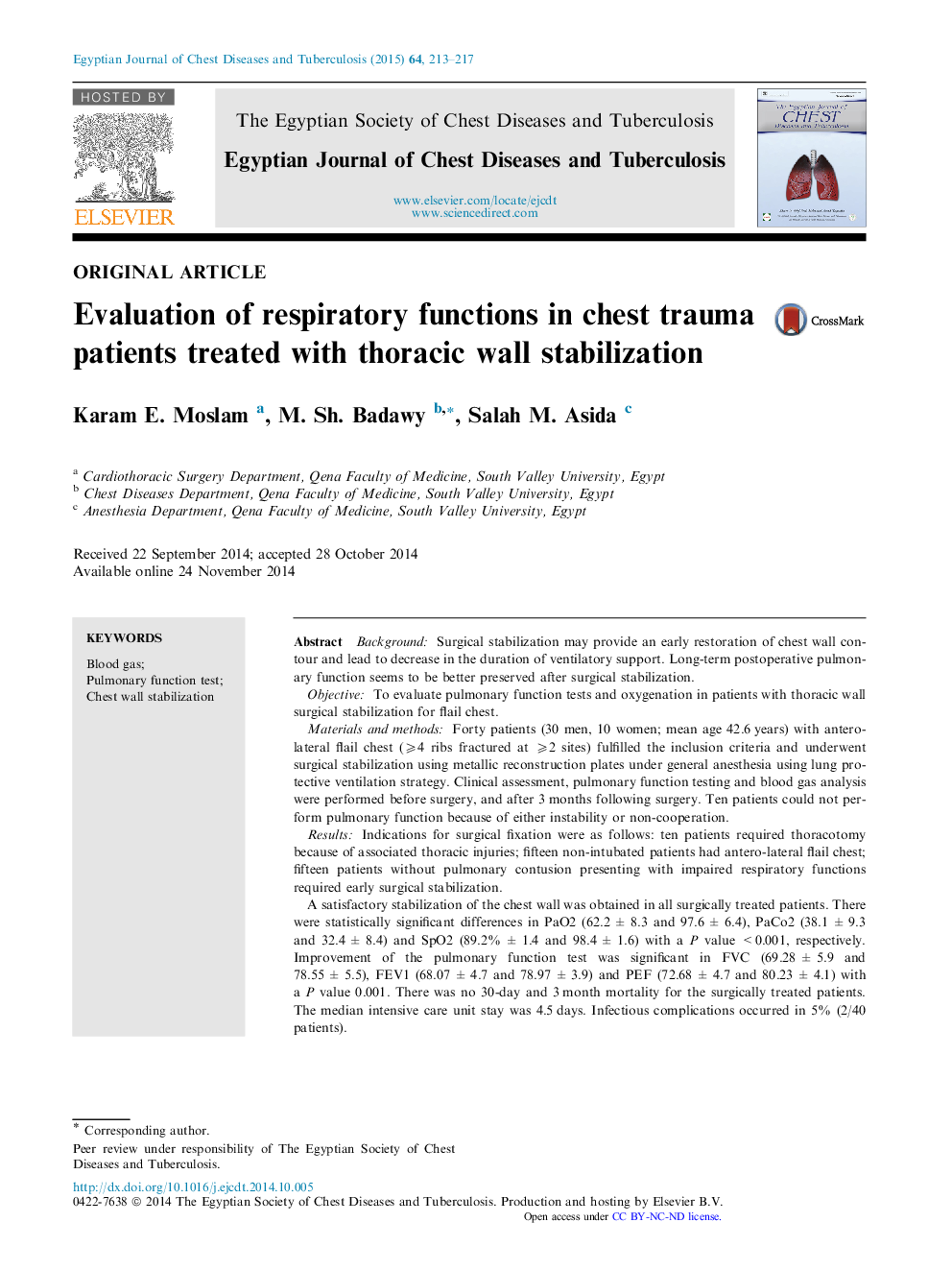| Article ID | Journal | Published Year | Pages | File Type |
|---|---|---|---|---|
| 3400108 | Egyptian Journal of Chest Diseases and Tuberculosis | 2015 | 5 Pages |
BackgroundSurgical stabilization may provide an early restoration of chest wall contour and lead to decrease in the duration of ventilatory support. Long-term postoperative pulmonary function seems to be better preserved after surgical stabilization.ObjectiveTo evaluate pulmonary function tests and oxygenation in patients with thoracic wall surgical stabilization for flail chest.Materials and methodsForty patients (30 men, 10 women; mean age 42.6 years) with antero-lateral flail chest (⩾4 ribs fractured at ⩾2 sites) fulfilled the inclusion criteria and underwent surgical stabilization using metallic reconstruction plates under general anesthesia using lung protective ventilation strategy. Clinical assessment, pulmonary function testing and blood gas analysis were performed before surgery, and after 3 months following surgery. Ten patients could not perform pulmonary function because of either instability or non-cooperation.ResultsIndications for surgical fixation were as follows: ten patients required thoracotomy because of associated thoracic injuries; fifteen non-intubated patients had antero-lateral flail chest; fifteen patients without pulmonary contusion presenting with impaired respiratory functions required early surgical stabilization.A satisfactory stabilization of the chest wall was obtained in all surgically treated patients. There were statistically significant differences in PaO2 (62.2 ± 8.3 and 97.6 ± 6.4), PaCo2 (38.1 ± 9.3 and 32.4 ± 8.4) and SpO2 (89.2% ± 1.4 and 98.4 ± 1.6) with a P value <0.001, respectively. Improvement of the pulmonary function test was significant in FVC (69.28 ± 5.9 and 78.55 ± 5.5), FEV1 (68.07 ± 4.7 and 78.97 ± 3.9) and PEF (72.68 ± 4.7 and 80.23 ± 4.1) with a P value 0.001. There was no 30-day and 3 month mortality for the surgically treated patients. The median intensive care unit stay was 4.5 days. Infectious complications occurred in 5% (2/40 patients).ConclusionSurgical stabilization of flail chest with metallic plates is a safe and effective therapy in properly selected patients. These patients had a significantly smoother course during the intensive care unit and hospital stays, had improved respiratory functions and decreased rate of complications.
